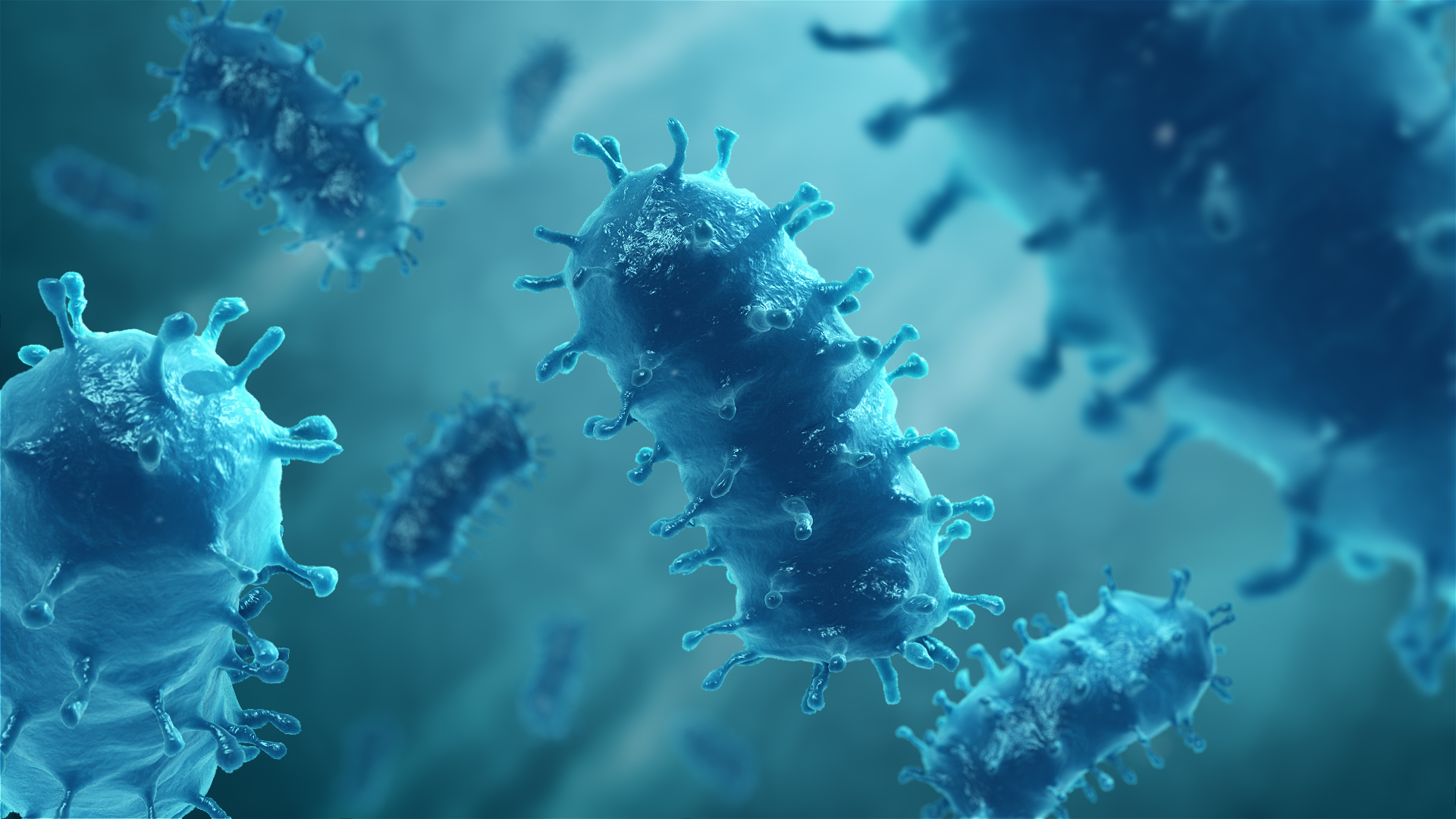Rabies is a fatal viral disease that can infect the mammalian brain. It spreads through saliva when an infected animal (like a dog) bites another mammal (usually a human).

3D Medical Animation still of Rabies virus
The initial symptoms are mild and non-specific such as fever, weakness, headache, etc, making rabies hard to distinguish from a common flu during its early stages. The viral incubation period could be as short as 4 days to as long as 6 years, depending on the location and severity of the contaminated wound and the amount of virus introduced in the body. Eventually, the disease can manifest in two ways:
20% of the times, the patient suffers from paralytic rabies, in which his muscles gradually begin to paralyze starting from the site of animal bite. Paralytic rabies, eventually, leads to coma and death.
In the rest 80% of the cases, the patient suffers from furious rabies symptoms such as hallucinations, anxiety, hypersalivation, encephalitis, and hydrophobia.
It had been anciently referred to as ‘hydrophobia’, which literally means ‘fear of water’. Certain set of symptoms in the later stages of it such as difficulty in swallowing and drinking due to throat and laryngeal muscle spasms are common. Moreover, viral multiplication in the salivary glands results in excessive saliva production that worsens the liquid intake further. For this reason, the patient demonstrates hydrophobia.
Cause
Lyssavirus virions are enveloped and have a single-stranded RNA. The RNA genome encodes 5 genes in a highly efficient order: nucleoprotein (N), phosphoprotein (P), matrix protein (M), glycoprotein (G) and the viral RNA polymerase (L).
After getting bitten by a rabid animal, the virus gets deposited in the muscle and subcutaneous tissue and begins to multiply. Rabies virus multiplies inside cells. It uses the acidic environment of the endosome surrounding it and binds to its membrane simultaneously, releasing its 5 proteins and single strand RNA into the cell cytoplasm. Usually the muscle cells close to the site of infection are infected first, so that the virus can escape attack from the host's immune system. Once enough virus has been replicated, the particles bind to the acetylcholine receptor at the neuromuscular junction, from where they travel through the nerve cell axon and eventually hits the central nervous system (CNS). After infecting the brain, the peripheral and autonomic nervous systems, the virus migrates to the salivary glands, ready to be transmitted to the next host.
Transmission
The most common mode of acquiring rabies is through an animal bite. In the U.S., rabies transmission is likely to occur through bats, foxes, racoons and skunks, whereas in developing countries, stray dogs are more likely.
Transmission between humans may be possible during organ transplantation surgeries, however such cases are extremely rare.
Additionally, as the virus is present in sperm or vaginal secretions, spread through sex may be possible.
Treatment
Prompt initiation of treatment can prevent the rabies infection from taking over the patient’s body. In case of an animal bite, immediate preventative treatment is recommended even before determining if the biting animal was infected.
The obvious first step is to disinfect the bitten area by rinsing it immediately with soap and water. Next, owing to how fatal the disease could be, the Centers for Disease Control and Prevention (CDC) recommends a protective treatment comprising one dose of human rabies immunoglobulin (HRIG) and 4 shots of rabies vaccine to be spaced out in the initial 14 days of bite.
Prevention
The rabies vaccine was first harvested from infected rabbits in 1885. Several iterations and improvements later, we now have purified chick embryo cell vaccine and purified vero cell rabies vaccine available as effective immunization options for both humans and animals.
Since human rabies is nearly 100% fatal if prophylactic measures are not followed. Preexposure prophylaxis entails the administration of the rabies vaccine to individuals at high risk for exposure to rabies viruses (e.g., laboratory workers who handle infected specimens, diagnosticians, veterinarians, animal control workers, rabies researchers, cave explorers).
WHO has set up vaccine banks for dog vaccination in Asia and South Africa. National mass dog vaccination campaigns are the most cost-effective strategy for preventing rabies. Public awareness, health education, dog vaccination and the availability and accessibility of post-exposure prophylaxis are key for rabies prevention and control.
Disclaimer: The information in no way constitutes, or should be construed as medical advice. Nor is the above article an endorsement of any research findings discussed in the article an endorsement for any of the source publications.

Using 3D medical animation and illustration to visualize neurons – the body’s IoT system
Your body has more sense than you think! Read More..








